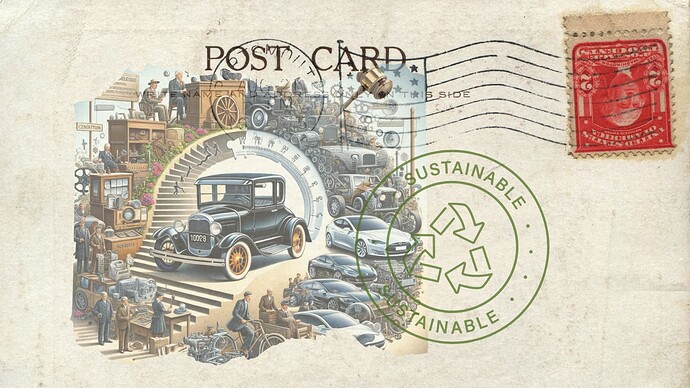
Illustration by Inge Snip
Humanity has been doing product durability for thousands of years. We didn’t have a throwaway society, but it has developed in the last 100 years. Ford, for example, envisaged that if you bought your Model C, you would keep it for life. A whole aftermarket industry, especially in the U.S., supplied bits for it. If your Model T was too basic (and they were very basic), you could add all sorts of things. Many of those were designed by ordinary drivers, ordinary citizens, and small-scale inventors.
In the 1920s and thirties, the car industry was gradually professionalised, whereby the car industry decided “We don’t want all these people tinkering with our products. We want to control everything.”
This has now taken an extreme form with Tesla. Tesla has a total control system to the extent that if you start fiddling around with a Tesla, a voice will come out of the car and say, “What are you doing to our cars?”
Product durability is not just a technological issue, it’s also a psychological issue. You must build a relationship with the product to look after it and to make it last a long time.
The classical movement
This could form a model for a future, more durable car. But that would mean the manufacturer needs to give up some control frequency. That is going to be a real challenge. However, all over the world, freedom-to-tinker legislation is popping up for various sectors where consumers will be given an inherent right to do things to the products once they’ve bought them.
Product Management, Leasing
What about a product surface system approach whereby the end user doesn’t own the product, but the manufacturer or a management company manages it? That, of course, means that you would have less ownership of the product and less of that bond. Within an ownership model, it’s easier to build that bond. You can have more intensive use of a product if you think of car-sharing schemes, for example, car clubs. You get the intensive life out of the product in a shorter period than with the ownership model.
Waste Stream
The only problem when thinking of the circular economy is controlling that waste stream. If you have a very intensively used product, you still have a fast waste stream, and you need to work out how to deal with that. Whereas with a personal ownership model, your waste stream could be delayed. For example, if a car lasts 30 years instead of 15, that hinders the waste stream quite a bit.